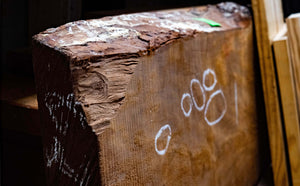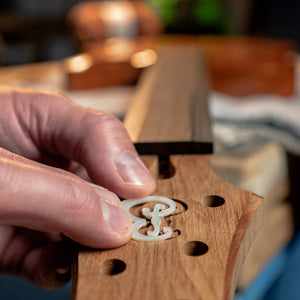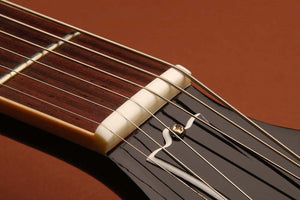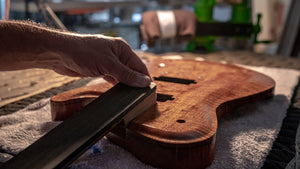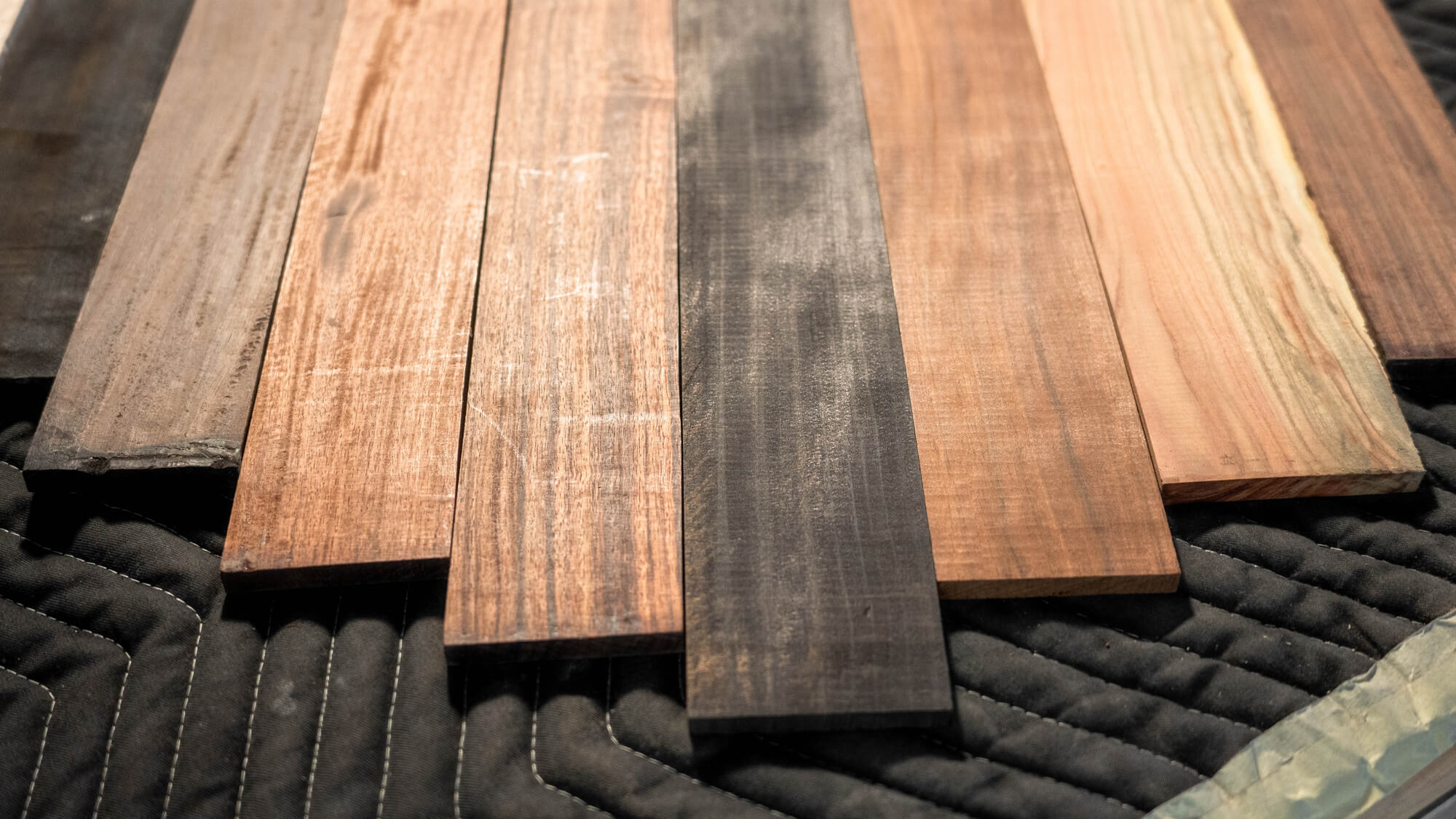
What is tonewood exactly? Is tonewood a valid designation for special instrument quality wood species? Do tonewood species or different varieties of wood actually affect tone? The term is widely used throughout the guitar industry, and many companies claim to use only the ‘finest tonewoods’, but we feel the term is used fairly loosely and the definition can be a little vague. Are tonewoods an elite selection of wood species that are known by name and traditionally used for guitars such as Brazilian Rosewood and Genuine Honduran Mahogany? Can special varieties of wood actually affect tone or is all wood the same? Is there more to this designation or is ‘tonewood’ just a myth abused by companies to create illusions of superiority and exclusivity?
First, the Wikipedia definition: Tonewood refers to specific wood varieties that possess tonal properties that make them good choices for use in woodwind or acoustic stringed instruments.’ 1
Sure, that make sense, right? Well, yes and no. Basically this a subject with many variables to account for, and the definition of a ‘tonewood’ can be a little vague when combing the internet or checking company websites. We believe that the lack of a standardized and objective definition of what qualifies wood as tonewood is largely the source of most debates on the subject. Wikipedia goes on to explain several aspects of wood selection that luthiers use to select their tonewoods beyond selecting a species of wood. Other variables include grain direction, age of wood, rate of growth, and density – all of which can vary within a given species.
Okay, so Tonewood is a thing, but it doesn’t matter in an Electric Guitar, right?
Let’s cut to the chase on electric guitar woods. They do not matter as much as on an acoustic, but they still affect your guitar’s tone. There are some caveats to this statement. An electric guitar essentially creates a live recording of you playing your guitar and then sends it to an amplifier or digital processing platform to be processed and played out a P.A. If your rig is mostly digital modeling (FX), or is highly processed using pre-amps, active picks, effects pedals and/or high gain, then the varieties of wood will have a much smaller effect on the tone and resonance of your guitar. If your rig is more traditional utilizing analog signals and natural tube amplification, then the integrity of your signal is better maintained. This is when the quality (Ex. age, curing process), structure (strength/weight ratio, grain direction), and unique subtleties of specific pieces of wood will become more apparent. These unique tonal qualities become more apparent to the trained ear and is no different than a keen nose or the refined palate of a talented chef or experienced wine sommelier. Like a fine wine, these subtle qualities that are unique to each Born Guitar are what create a unique tonal palate to build your guitar tone around.
So what is Born’s approach to wood selection and the tonewood myth?

So at Born we’ve come to believe that yes, there are so called ‘tonewoods’, but we try not to focus on that term much given the liberal use of the wood in the guitar industry. We simply focus on selecting woods that are not only ideal for an instrument, but are also selected specifically to hone in on each guitar build’s unique vibe and tonal spectrum. While we agree that many traditionally desirable species of wood (Ex. Rosewood) lend themselves to be better instrument woods, we also believe that alternative species of woods make excellent instruments as well. Our main principle is that literally every single chuck of wood is unique. To nail the sound, look and feel you need out of your dream guitar we purposefully hand-select each piece of wood with your desired guitar in mind in order to orchestrate a masterpiece.
Variety within Wood Species
Ash is a great example to illustrate the variations in a given species. Swamp Ash is coveted for electric guitars because of its beautiful grain, light weight and well-rounded midrange tonal profile. However, as a species this wood can vary greatly in density, looks and musical quality. Swamp Ash that is desirable for guitar is generally from the first 4-6 feet of the tree, but for many years swamp ash was considered waste wood from a construction perspective. This is why buying wood based on species is a trap that many amateur luthiers fall into when selecting suitable woods for their instruments. We believe if you are building a high quality instrument that it is much more valuable to understand how to select wood based on different structural properties versus knowing what are the best or most famous species. If you know what to look for you’ll be amazed at the broad variety of wood species that are suitable for instruments, and potentially more sustainably sourced.
This is a hotly debated topic. Please realize that this is only our current take (opinion) on the topic based on our experience, research, and conversations with other luthiers and musicians. If you disagree with us or would like to add something to the conversation, that’s great! Feel free to politely email us your thoughts, research, and opinions, but realize opinions are like a$$#013s, everyone has one. LOL. We learn something new every day, and we expect that to continue for the rest of our lives. Cheers!
1 https://en.wikipedia.org/wiki/Tonewood. Retrieved 8-18-2022.




